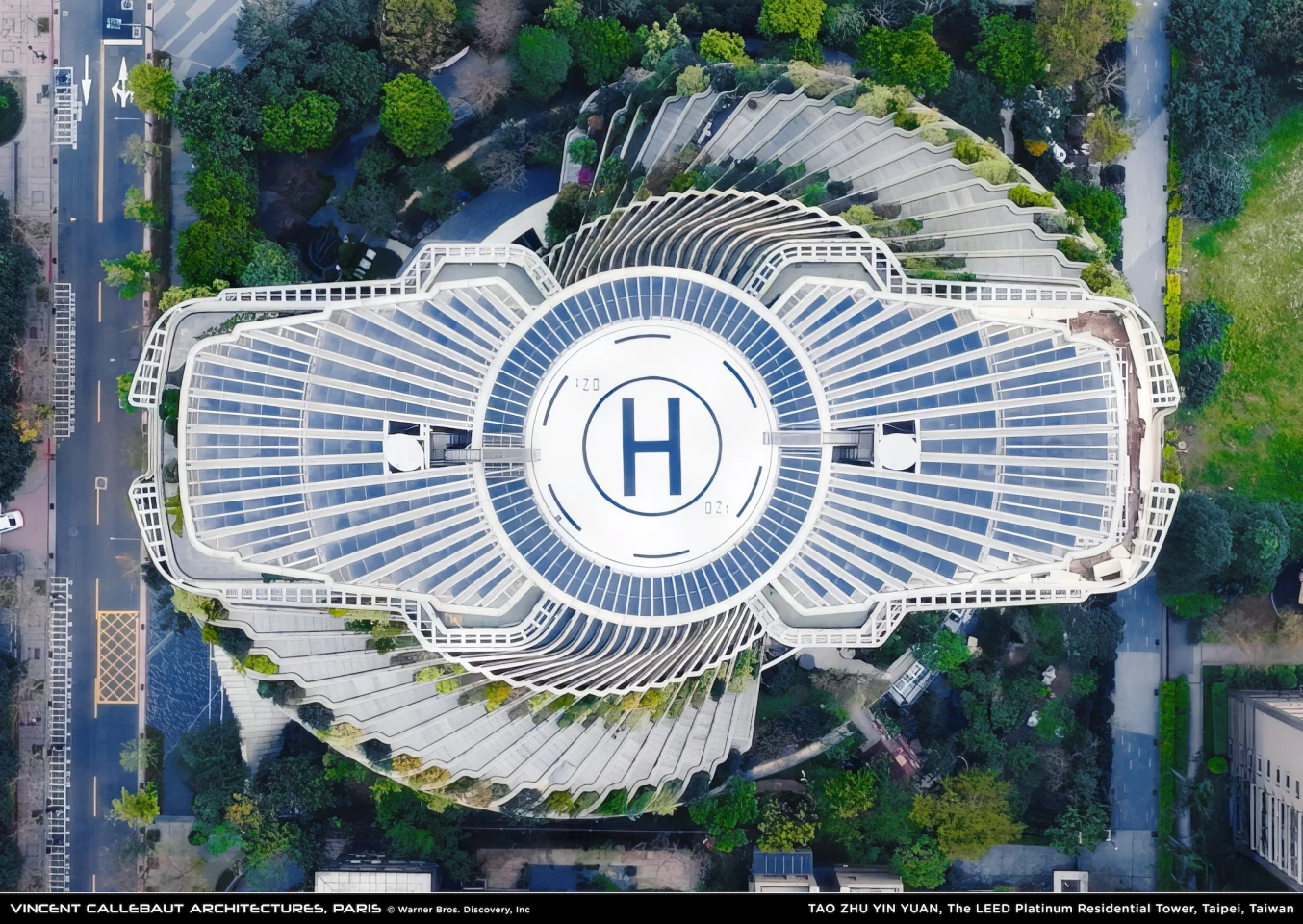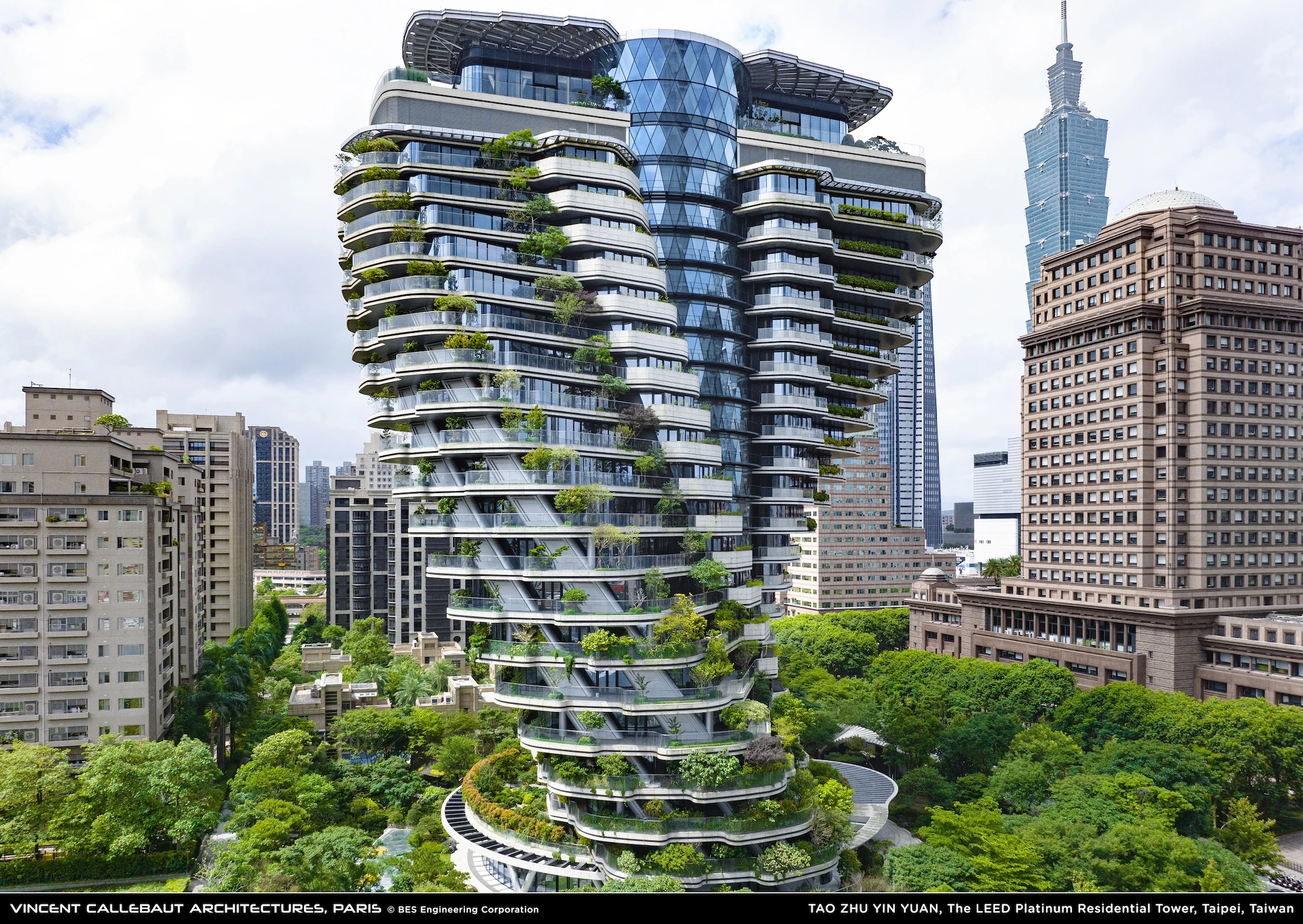Vincent Callebaut Architectures' (VCA) eye-catching twisting residential tower takes the form of a DNA's double helix in Taipei, Taiwan. It boasts impressive sustainability features and thousands of plants and trees on – and around – its exterior, helping create a pleasant experience for residents while enlivening the surrounding area.
Tao Zhu Yin Yuan (aka Agora Garden Tower) rises to a height of 93.2 m (305 ft), and consists of 21 above-ground floors. Of these, 20 of the floors twist 4.5 degrees per floor as the building rises, so that it twists 90 degrees from bottom to top. According to VCA, this actually has a practical purpose and helps ensure each apartment is bathed in daylight.
The apartments' interiors unfortunately aren't pictured but each unit is designed with three sides of floor-to-ceiling windows, encouraging natural air circulation. Additionally, the tower's unusual design improves flexibility for residents and results in column-free spaces on odd-numbered floors. On even-numbered floors, only the edges of the building have visible columns.
The tower is designed to be resilient in the face of earthquakes and flooding, and consists of a high-strength steel frame with 68 foundation piles reaching 50 m (164 ft) into the bedrock below, as well as a series of seismic isolation pads which help prevent the building from shaking. It also has flood barriers and its windows have been tested to withstand extremely high winds.

Tao Zhu Yin Yuan has been structurally complete since 2021, however it only recently received its LEED Platinum (a green building standard) certification that proves its sustainability and was then declared fully finished. The delay offers us a good opportunity to see what one of these plant-covered buildings actually looks like once the greenery has fully grown.
Approximately 23,000 trees, shrubs and plants have been installed throughout the project, including its landscaped garden areas, balconies and terraces. Along with creating a pleasant atmosphere, VCA says that all that greenery will absorb up to 130 tons of carbon dioxide annually.
A rainwater harvesting system helps keep it all watered and reduces its use on the grid-based water considerably.

Its electricity usage is reduced with roof-based solar panels that are expected to generate around 40,000 kilowatt-hours of electricity annually, sufficient to run the equivalent of 10 households. It also has six wind turbines, producing an additional 1,400 kilowatt-hours of electricity per year, which are used to power the building's public facilities.
Source: Vincent Callebaut Architectures














